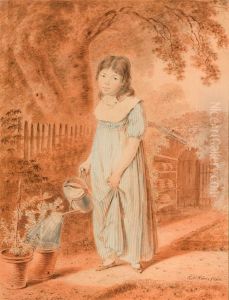Franz Nikolaus Koenig Paintings
Franz Nikolaus König was a German artist born on November 4, 1765, in Mainz, which at the time was part of the Electorate of Mainz in the Holy Roman Empire. Not to be confused with other historical figures bearing a similar name, König was known primarily for his work as an engraver and painter. His artistic education and early influences, however, are not well-documented, which is not uncommon for artists of this period. What is known is that he became active during a time of significant social and political change, which was marked by the French Revolution and the Napoleonic Wars.
König's work primarily reflects the tastes and styles of the late 18th and early 19th centuries. He was particularly skilled in the art of copperplate engraving, which was a popular medium for reproducing images before the advent of modern printing technologies. His engravings often included portraits, landscapes, and religious subjects, catering to the demands of the time and the tastes of his patrons. He also worked with etchings and occasionally produced paintings. Unfortunately, specific details about his major works and commissions are scarce, as he was not among the most famous artists of his time.
Despite the lack of extensive records on his artistic output, Franz Nikolaus König contributed to the cultural landscape of his era. His work would have been part of the visual culture that shaped the sensibilities and historical understanding of people living through the late 18th and early 19th centuries. König passed away on February 4, 1832, in Mainz, which by that time had become part of the Grand Duchy of Hesse following the Congress of Vienna and the restructuring of Europe after Napoleon's defeat. While König may not have achieved the same level of recognition as some of his contemporaries, his work remains a testament to the craftsmanship and aesthetic values of his time.
